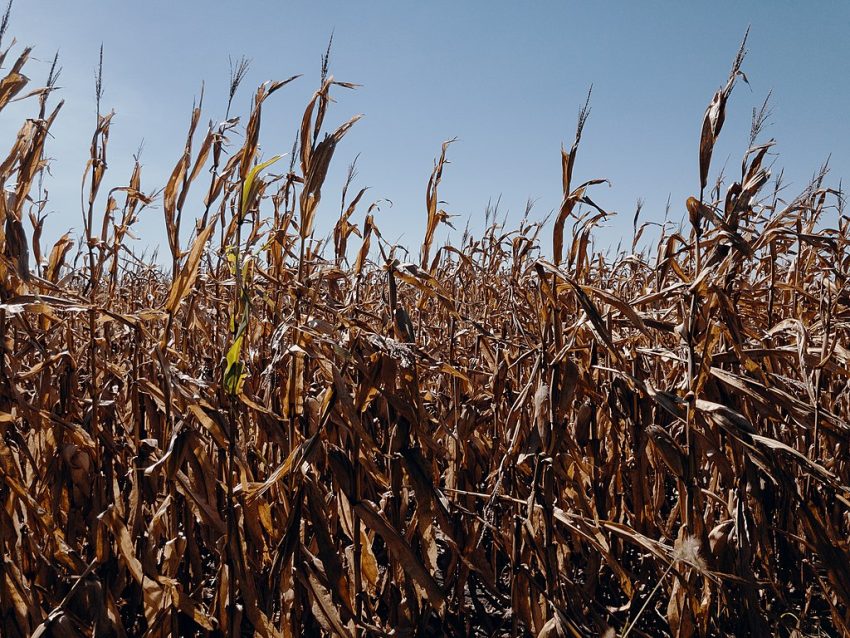As the calendar flips to late summer 2025, U.S. farmers, particularly in the Midwest, are eyeing weather patterns with a mix of caution and anticipation. Forecasts indicate a potential shift toward La Niña conditions this fall, a climate phenomenon characterized by cooler-than-average sea surface temperatures in the equatorial Pacific Ocean. According to the latest updates from the Climate Prediction Center, ENSO-neutral conditions are currently dominant, but there’s a growing likelihood of a brief La Niña episode emerging in the fall and persisting into early winter 2025-26.
This development could influence everything from harvest operations to crop yields and market prices, especially for staple commodities like corn and soybeans.
Understanding La Niña and Its Potential Return
La Niña is part of the El Niño-Southern Oscillation (ENSO) cycle, often bringing drier and warmer conditions to the southern U.S., while the northern regions might experience wetter and cooler weather. For fall 2025, models suggest a 39-44% chance of La Niña developing, with some projections indicating a weak event by October. This follows a period of ENSO-neutral conditions, and while the event may be short-lived, its timing coincides with the critical harvest window for Midwest farmers.
For farmers, another La Niña could mean a continuation or intensification of variable weather patterns. In the Midwest—home to the bulk of U.S. corn and soybean production—historical La Niña episodes have often correlated with drier conditions during the growing season, potentially extending into fall. This dryness can facilitate smoother harvest operations by reducing mud and delays from rain, but it also risks exacerbating soil moisture deficits if precipitation remains below average. On the flip side, if La Niña brings unexpected cold snaps or early frosts, it could damage late-maturing crops or complicate fieldwork.
Broader Weather Projections for the Midwest This Fall
Beyond La Niña, seasonal outlooks from sources like The Old Farmer’s Almanac and NOAA paint a picture of a warmer-than-normal fall across much of the U.S., including the Midwest. September through November 2025 is expected to feature above-average temperatures, particularly in the western half of the country, with below-average precipitation for many regions. Drier-than-normal conditions are favored from the northern Plains into the Upper Midwest, which could align with La Niña influences.
However, not all forecasts agree on uniformity. AccuWeather anticipates lingering warmth but warns of lurking cold blasts and fall storms that could rattle the central U.S., potentially bringing severe weather to parts of the Corn Belt. Later in the season, stronger cooling is projected for the Midwest and Great Lakes, which might usher in an early taste of winter. These projections are influenced by broader factors, including the fading effects of previous ENSO phases and global climate drivers, but La Niña’s emergence could tip the scales toward more pronounced dryness.
Potential Impacts on Crop Yields
Yields for corn and soybeans are largely determined by weather during the planting and growing seasons, but fall conditions play a crucial role in final outcomes, quality, and harvest efficiency. If La Niña delivers drier weather to the Midwest, it could stress crops already vulnerable from any summer moisture shortfalls, leading to reduced kernel fill in corn or pod development in soybeans.
Historical data shows that La Niña years often result in corn yields 2-3% below trend lines in the U.S., due to decreased rainfall in key production areas. For soybeans, similar patterns emerge: drier conditions can lower yields, especially if they persist through the reproductive stages.
Warmer fall temperatures might extend the growing period, benefiting late-planted fields, but excessive heat or drought could accelerate maturity and diminish output. In contrast, if projections for occasional cold blasts materialize, frost risks could damage immature crops, further cutting yields. Overall, a La Niña-influenced fall might shave off national averages, with the Midwest bearing the brunt—potentially dropping corn yields by several bushels per acre and soybeans by 1-2 bushels, based on analog years.
Ripple Effects on Crop Prices
Lower yields typically translate to tighter supplies, which can drive up prices in response to steady or growing demand. For corn, a staple in livestock feed, ethanol, and exports, reduced Midwest production amid a La Niña could push futures higher, as seen in previous episodes where prices rose amid yield shortfalls.
Soybeans, used heavily in oil, meal, and global trade, might see even sharper increases if U.S. output falters while competitors like Brazil benefit from La Niña’s wetter patterns in South America, but not enough to offset global deficits. Current market dynamics amplify this: With USDA projecting robust 2025 production earlier in the year, any weather-driven downgrades could spark volatility.
If fall dryness eases harvest but confirms lower yields, corn prices might climb 5-10% from current levels, while soybeans could surge amid export competition. Conversely, if warmer, drier conditions speed up harvest without major losses, prices might stabilize or dip temporarily before winter demand kicks in.
Looking Ahead: Preparation and Uncertainty
Farmers should prepare for a potentially swift harvest under drier conditions but monitor for drought stress or storms that could disrupt operations. Tools like crop insurance and diversified planting can mitigate risks. While La Niña’s brief nature offers hope for a quick return to neutral conditions, its overlap with harvest underscores the fragility of agriculture to climate shifts.
In summary, another La Niña this fall could mean a double-edged sword for Midwest farmers: easier fieldwork but potential yield hits for corn and soybeans, ultimately supporting higher prices. As always, weather remains the wildcard—stay tuned to updates from NOAA and local forecasts for the latest insights.


